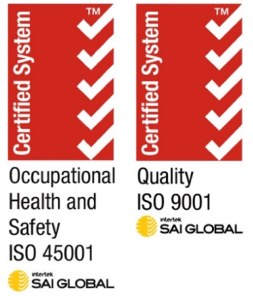Transportation
The "fleet" expands as many more people can afford cars
Light-duty vehicles — the cars, pickup trucks and sport utility vehicles (SUVs) that people use in their daily lives — represent one of the most visible demand sectors.
Demand for fuel for these personal vehicles, which is met nearly exclusively from oil, is expected to rise slowly over the next decade before gradually trending downward over the remainder of the Outlook period.
This shift in demand won’t be because of fewer vehicles in the world. In fact, from 2010 to 2040, the number of light-duty vehicles — the global "fleet" — is expected to more than double from about 800 million to about 1.7 billion, as the world’s population grows and more people in developing economies are able to afford cars.
In 2010, about 75 percent of the world’s vehicles were in OECD countries. However, looking ahead, about 80 percent of the growth in the global fleet will come from non-OECD countries.
For example, it is estimated that in 2010 China had only about five light-duty vehicles per 100 people, while India had fewer than two per 100 people; this compares to about 75 vehicles for every 100 people in the United States. However, by 2040, China and India are expected to increase their levels by more than 500 percent. In fact, by 2030, we expect China will have surpassed the United States as the country with the largest number of personal vehicles, even though China’s vehicles per capita will be about one-third the level of the United States at that time.
Significant growth will also come from countries in Latin America, Africa and the Middle East, which together will account for about 15 percent of the growth in the global fleet. Collectively, these countries are likely to increase their vehicle ownership by about 80 percent as their total number of cars nearly triples.
Importantly, the increase in the number of light-duty vehicles in the world through 2040 will likely be nearly offset by the fact that the vehicles themselves will be far more fuel efficient. As a result, the average efficiency of the world’s vehicle fleet is projected to reach about 46 mpg (about 5.1 liters per 100 km) compared to 24 mpg (9.8 liters per 100 km) in 2010.
This unprecedented improvement in global fuel economy is expected to reflect a surge in hybrid vehicle sales. Hybrids, which combine an internal combustion engine and an electric motor, are expected to account for about half of global new-car sales by 2040, as they become increasingly cost competitive compared to conventional vehicles.
By 2040, hybrids are expected to account for about 35 percent of the global light-duty vehicle fleet, up from less than 1 percent in 2010.
Over the same period, electric and plug-in vehicles are expected to grow to about 70 million cars, or less than 5 percent of the total fleet. This slower growth is attributed to the relatively higher cost of the vehicles, driven by the cost of batteries.
Demand for diesel and jet fuel is expected to increase by 75 percent from 2010 to 2040.
While global energy demand for personal transportation is expected to be relatively flat over the next few decades, demand for energy for commercial transportation — trucks, planes, ships and trains — will continue to grow significantly as economies expand and evolve.
Global demand for energy for commercial transportation is expected to rise by 70 percent from 2010 to 2040, driven by the projected increase in economic activity and the associated increase in movement of goods and freight.
Nearly every country will see an increase in commercial transportation energy demand through 2040, but China will see the largest increase — more than 4 million oil-equivalent barrels per day. In 2010, China trailed Europe, the United States and the Middle East in terms of energy demand for commercial transportation. By 2040, China is expected to be in the No. 1 spot. India and Brazil will also see large increases, with India having the highest growth rate globally.
The increase in energy demand in the commercial transportation sector is likely to be partially offset by significant improvements to fuel efficiency. For example, more efficient truck, aviation, marine and train fleets, along with logistical system improvements such as intermodal shipping, will help slow the growth in transportation energy demand in many countries. The largest driver in commercial transportation energy demand will come from heavy-duty vehicles such as trucks and buses. Demand for fuel for heavy-duty vehicles is projected to rise by about 70 percent, and account for about 60 percent of the total increase. In fact, by 2040, the world will be using about the same amount of energy in heavy-duty vehicles as the total energy demand in all of Africa today.
Over the next few decades, we expect the mix of fuels used for transportation to continue to evolve
Liquid fuels — gasoline, diesel, jet fuel and fuel oil — will remain the energy of choice for most types of transportation, because they offer a unique combination of affordability, availability, portability and high energy density.
We expect global demand for gasoline (including ethanol) to be relatively flat from 2010 to 2040, largely because cars and other light-duty vehicles will become much more efficient. On the other hand, demand for diesel (including biodiesel) will grow sharply — by about 75 percent — to power the rise in activity in trucks and other commercial transportation. Diesel will also play a more significant role in the marine sector in the latter half of the Outlook period, in response to stricter marine emissions standards. Demand for jet fuel will also grow close to 75 percent.
Natural gas is likely to grow in use as a transportation fuel, with its attractiveness enhanced by its relatively low emissions and its affordability relative to oil in many parts of the world.
We expect that growth in natural gas as a transportation fuel will be seen mainly in commercial vehicles — mostly fleet trucks that can run on compressed natural gas (CNG) and long-haul trucks that can use liquefied natural gas (LNG). (See next page.) Lower-sulphur fuel regulations for marine vessels expected over the next decade may attract some shipping companies to invest in LNG capability.
In 2010, natural gas accounted for about 1 percent of all transportation fuels, with about 45 percent of that demand concentrated in Asia Pacific. By 2040, the share of natural gas will likely rise to 5 percent, with growth driven by Asia Pacific and North America.





